

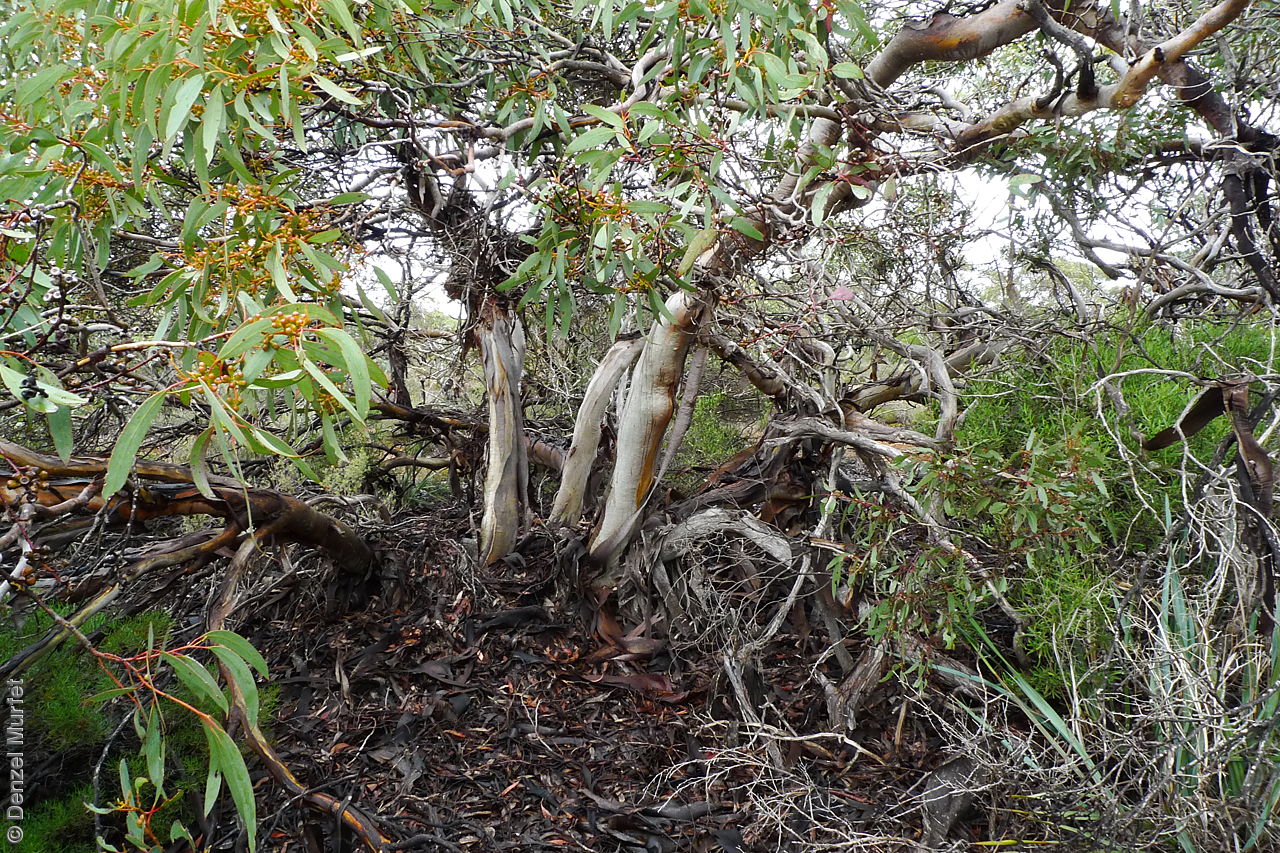


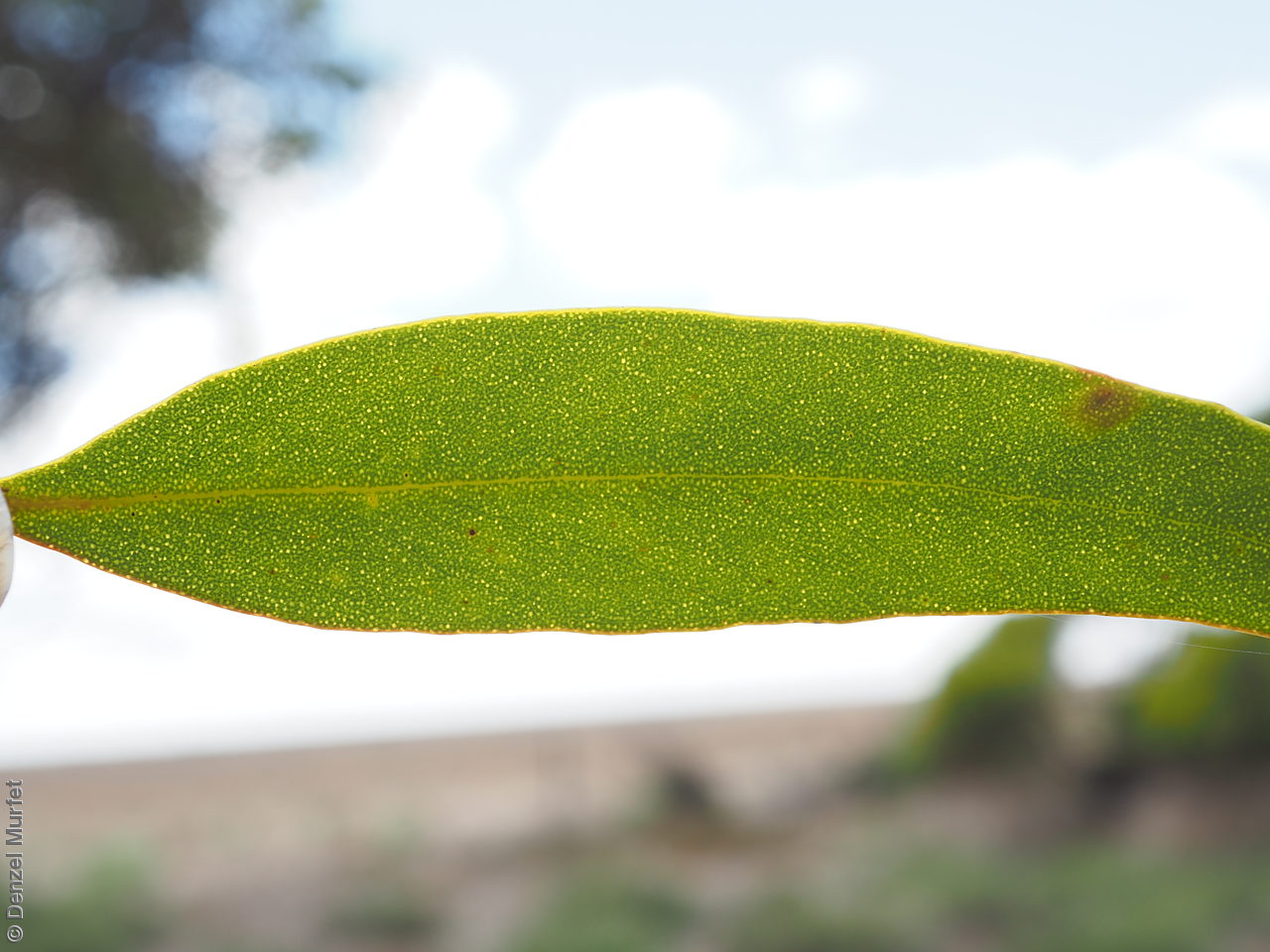
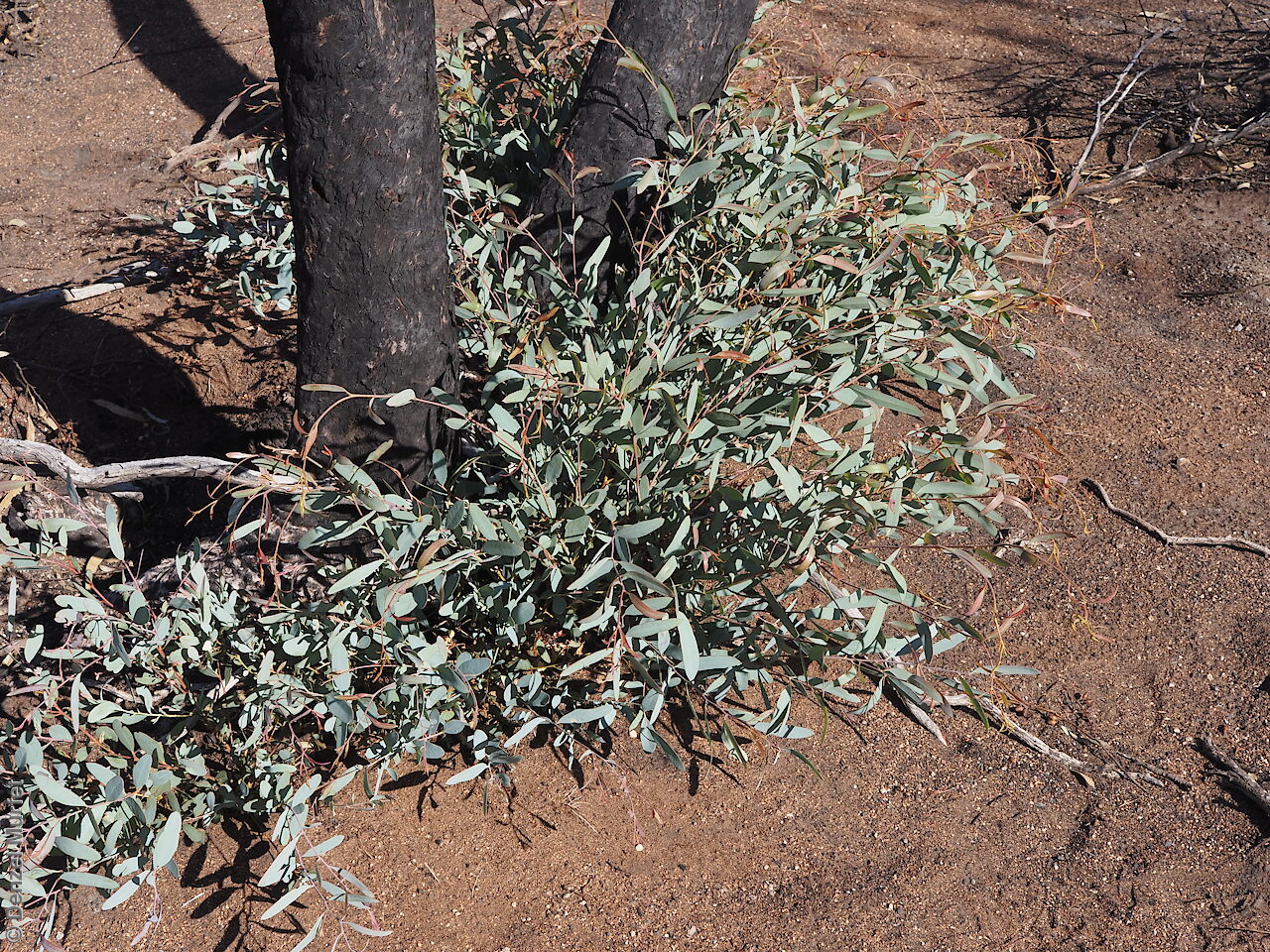

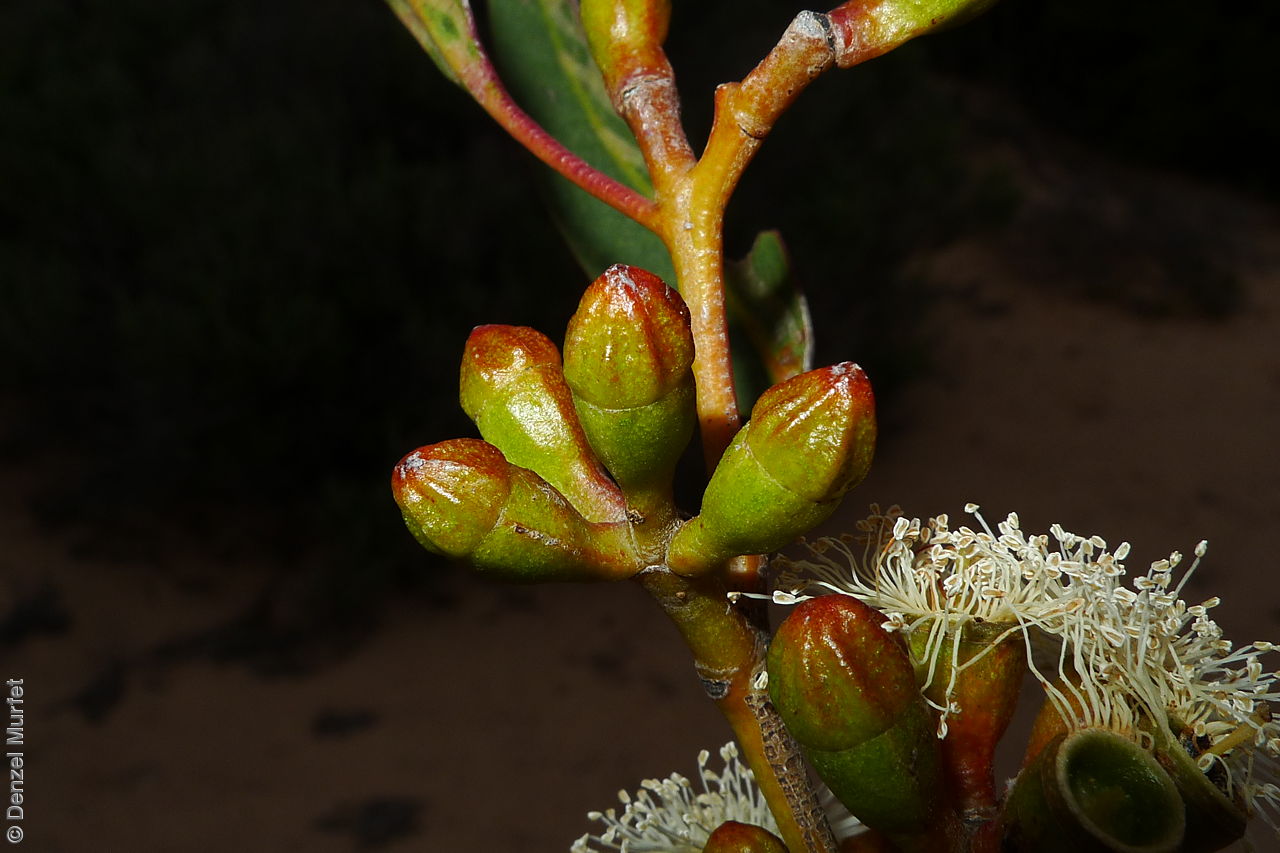




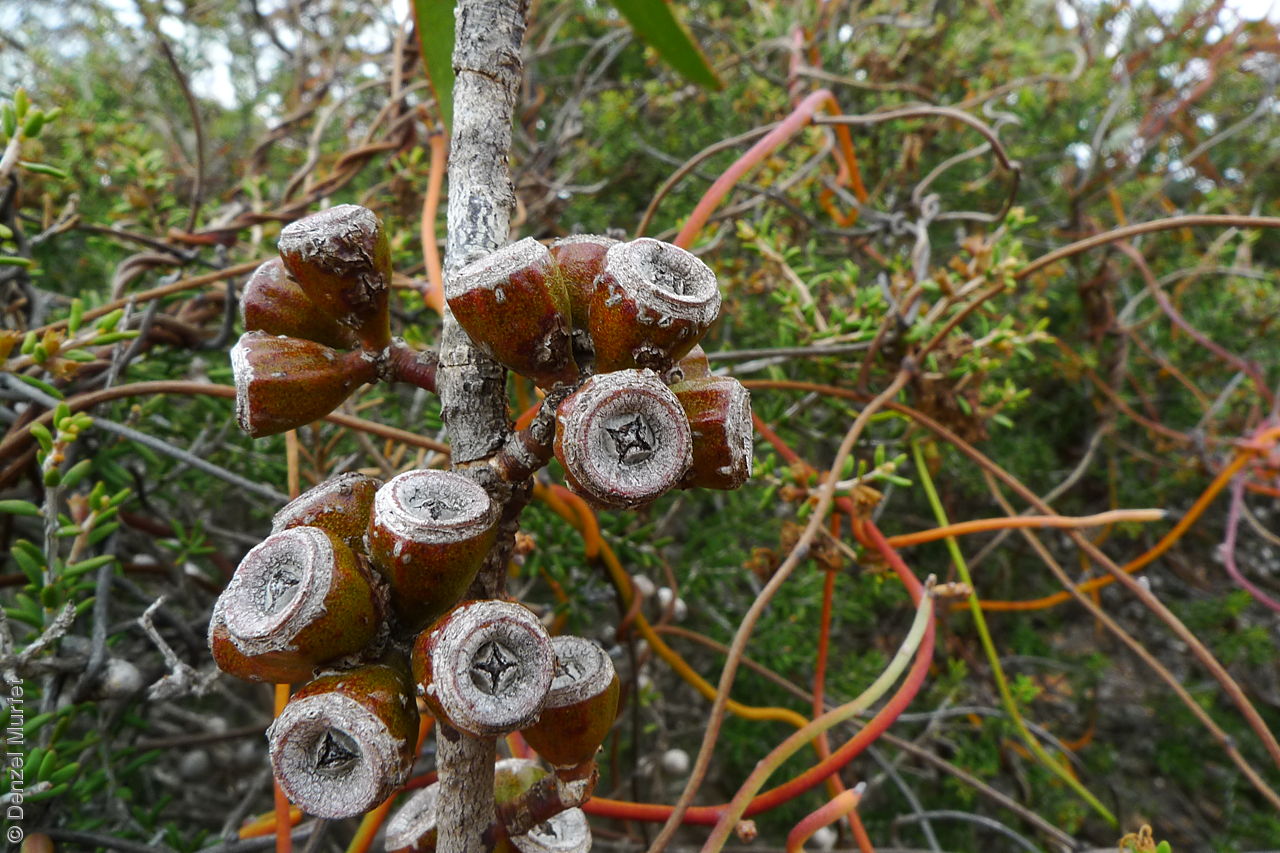








Botanical art
Prior names
Eucalyptus 'triangolensis'
Common names
Nundroo Mallee
Etymology
Eucalyptus from the Greek 'eu' meaning well and 'calyptos' meaning covered; alluding to the cap or lid which covers the stamens in the bud.
Distribution and status
Found on the Eyre Peninsula west along the Nullarbor in South Australia, growing on shallow loam or sandy loam over limestone in mallee shrubland or low open woodland. Also found in Western Australia. Native. Common in South Australia. Uncommon in Western Australia.
Herbarium regions: Nullarbor, Eyre Peninsula
AVH map: SA distribution map (external link)
Plant description
Single trunk tree or multi-stemmed mallee to 15 m high with smooth orange-tan, grey to cream bark throughout. Juvenile leaves ovate to broad-lanceolate, dull green to blue-green. Adult leaves to 140 mm long and 25 mm wide, lanceolate to slightly curved, dull blue-green when young and maturing glossy green. Inflorescences axillary in groups of 7-9 flowers, held erect. Buds slightly ribbed to 12 mm long and 7 mm wide, bud-cap cone-shaped equal in width as the base. Flowers creamy-white appearing in autumn. Fruits are cup-shaped to cone-shaped woody fruit to 10 mm long and 9 mm wide, disc descending, valves 3 or 4, at or just above the rim. Seeds are glossy red-brown seed. Seed embryo type is folded.
Seed collection and propagation
Collect seeds between January and December. Collect mature fruits that are dark and hard (difficult to break with a finger nail), with the valves un-open any time of year. Leave the fruits in a breathable container in a dry room for one to two weeks. This allows the valves on the fruit to open and release the seeds. Separate the seeds by placing all the materials into a bucket and shaking it to dislodge the seeds. Pass the material through a sieve to separate the unwanted material. The finer material will contain both seeds (soft) and frass (hard) usually distinguishable from each other but can be very similar in shape and colour. With finer sieves, the seeds can be separated from the frass but this is not essential for storage or propagation. Store the seeds with a desiccant such as dried silica beads or dry rice, in an air tight container in a cool and dry place. Seeds are non-dormant, viable seed should germinate readily.
| Location | No. of seeds (weight grams) | Number of plants | Date collected | Collection number Collection location | Date stored | % Viability | Storage temperature |
|---|---|---|---|---|---|---|---|
| MSB | 7,600 (7.16 g) | 15 | 9-Sep-2008 | HPV3671 Nullarbor | 95% |
Number of plants: This is the number of plants from which the seeds were collected.
Collection location: The Herbarium of South Australia's region name.
% Viability: Percentage of filled healthy seeds determined by a cut test or x-ray.